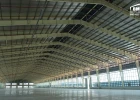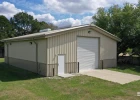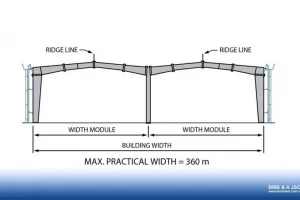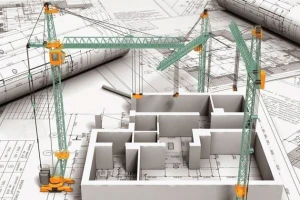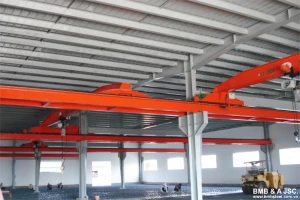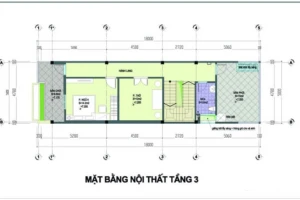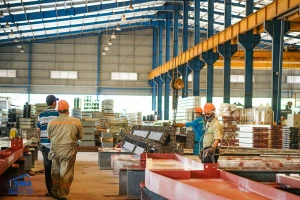Safe processes for industrial electrical installations
- What are industrial electrical installations?
- Standards and requirements for industrial electrical installations
- Components of industrial electrical systems
- Distribution structure of industrial electrical systems
- Criteria for selecting equipment, components for industrial electrical installations
- Detailed processes of industrial electrical installations
- Important notes when installing the industrial electrical system
Industrial electrical installations are a critical component that directly impacts efficient production and safe operation. Installing an industrial electrical system requires technical knowledge and strict compliance with safety, design, and operational standards. Through BMB Steel’s article, let’s explore the key requirements, standards, proper procedures for industrial electrical installations to help optimize long-term energy efficiency, reduce operating costs.
What are industrial electrical installations?
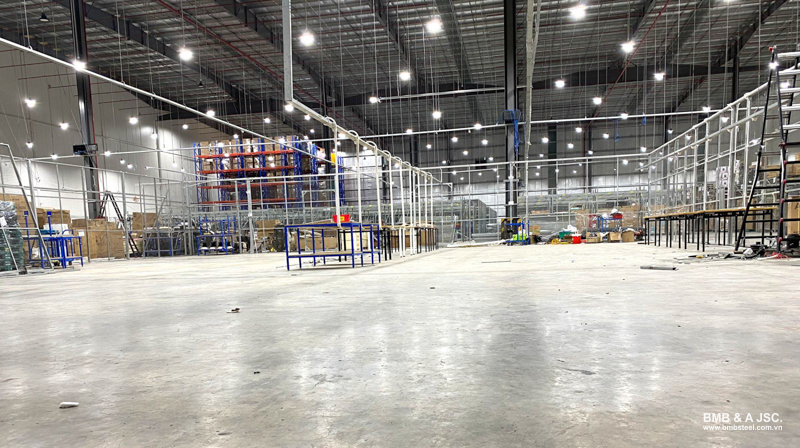
Industrial electrical systems are networks designed to transmit and distribute electricity to ensure a reliable power supply for machinery, equipment used in production and operation in a factory.
Industrial electrical installations are considered one of the most critical components in the construction and operation of manufacturing factories. Beyond simply delivering electricity, the system significantly impacts production efficiency and ensures a safe working environment for employees.
Read more: Drawings of pre-engineered steel buildings trending in 2021
Standards and requirements for industrial electrical installations
General electrical safety requirements
- All wiring systems must meet insulation standards, have cross-sectional areas appropriate for the electrical load.
- Protective devices such as fuses, circuit breakers (MCBs), grounding systems must be regularly inspected and maintained to promptly detect and resolve any issues.
- The system should include protective measures against electric shock, overheating, overloading, and short circuits to ensure the safety of both personnel and equipment in the factory.
Standards for factory electrical design drawings
- The drawings must use correct industry-standard symbols, accurate scales, well-organized layouts.
- Comply with current design standards and regulations related to emergency exits, emergency lighting, fire protection systems.
- The power demand for each area and type of equipment must be accurately determined to avoid overloading, voltage drops, electrical fires.
- Designs should focus on efficient electricity use, minimizing energy loss and consumption costs, while incorporating energy-saving solutions.
- The electrical system should be designed with future expansion allowing for the integration of new machinery or equipment without disrupting the existing system.
Read more: What is the pre-engineered steel building? The optimal solution for your projects
Components of industrial electrical systems
Cable tray and ladder system
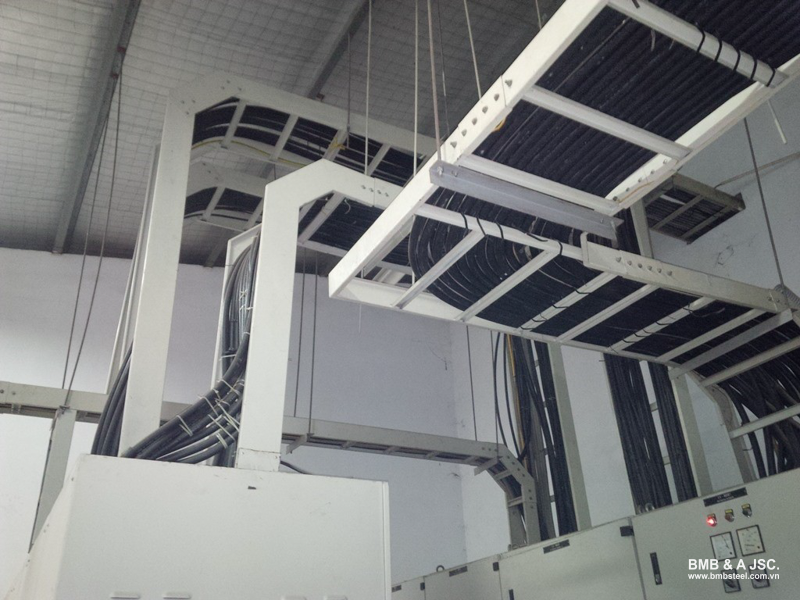
The cable tray and ladder system serves as the “backbone” of the industrial electrical system, responsible for routing, protecting electrical wiring and cables. Common types include:
- Cable ladder: Open-frame design suitable for large cables, offering excellent heat dissipation and easy inspection and maintenance.
- Cable tray: Used for smaller cable systems or areas requiring more protection. Available in solid or perforated forms depending on needs.
- Conduit: Commonly used in concealed installations or areas requiring high protection levels.
Main power cable system
This system is primarily responsible for transmitting electricity from the main power source (transformer or grid) to distribution boards, which then supply power to all equipment and machinery in the factory.
Low-voltage system
This includes devices with low energy consumption that play a vital role in operation, monitoring, ensuring workplace safety, such as: lighting systems, automatic door controllers, surveillance cameras, alarm and fire detection systems, computers, printers, networking devices, etc.
Electrical panels
Electrical panels are the central control of the entire industrial electrical system. They manage power distribution and are equipped with safety devices to prevent risks such as overloading, short circuits, electrical fires. Main types include:
- Distribution panels: Distribute and control electricity from the main source to specific production zones.
- Control panels: Operate machinery and production equipment via control boards, relays, automation systems.
- Safety panels: Integrate protective devices like circuit breakers, MCBs, disconnect switches to cut off power during faults.
Read more: Common types of steel structures
Distribution structure of industrial electrical systems
The electrical system in a factory is organized in a hierarchical structure to ensure safe, continuous and appropriate power supply for different groups of equipment.
High voltage
- High-voltage power is typically supplied directly from the national power grid or a nearby substation.
- Its primary function is to supply electricity to the factory’s main transformer station, where the voltage is stepped down to lower levels.
- Due to the high risk associated with high voltage, this system must be designed with multiple safety layers and may only be installed and operated by licensed, highly skilled technicians.
Medium voltage
- Medium voltage is produced by stepping down high-voltage power at the factory’s main transformer station.
- This intermediate voltage level is responsible for delivering power to the medium-voltage switchboards (MSB), which then distribute it further down to the low-voltage level.
- Medium-voltage systems still pose significant safety risks if not properly designed and installed. Operation and maintenance require certified technicians with relevant experience.
Low voltage
- Low voltage is the final stage in the electrical distribution chain, stepped down from the MSB to directly supply power to end-use equipment in the factory, such as production machinery, industrial devices, lighting systems, air conditioning, ventilation fans, etc.
- The low-voltage system must be carefully calculated for each usage area to ensure proper power delivery, minimize voltage drops and avoid overloading.
Criteria for selecting equipment, components for industrial electrical installations
Choosing the right electrical equipment, components directly impacts the operational efficiency, safety, long-term durability of the electrical system in factories. Here are key criteria to consider:
Suitable for power usage demands
Before selecting equipment, it is essential to determine the total electrical load of the entire factory. This ensures the selected devices have appropriate capacity, avoiding overload or underutilization, helps maintain stable operation to meet continuous production needs without interruptions.
Compatible with environmental conditions
Industrial environments often involve factors like high humidity, dust, heat, exposure to chemicals. Prioritize equipment with appropriate IP ratings, water and dust resistance. In chemically aggressive or explosive areas, use corrosion-resistant and explosion-proof equipment that complies with industry safety standards.
Compliance with technical standards
Choose products certified to meet both local and international technical standards. Prioritize energy-efficient devices with energy labeling certifications, which help reduce long-term operating costs.
Reputable brands
Certified products have clear warranty policies, easy access to replacements or repairs when needed. Select manufacturers that offer reliable after-sales service and responsive technical support.
Detailed processes of industrial electrical installations
Phase 1: Preparation for industrial electrical installations
- Calculate power demand: Determine the total power consumption of the entire factory, then allocate load requirements for each area, machinery and equipment.
- Site survey and design drawing: Based on the site condition and operational requirements, develop technical drawings that clearly show the layout, dimensions, positions of electrical panels and cable routing.
- Select construction contractor: Prioritize contractors with proven experience and reputation in industrial electrical installations to ensure technical compliance and safety.
- Estimate costs and develop a plan: Prepare a detailed budget for the entire electrical system and create a step-by-step execution plan that aligns with the overall construction timeline.
- Choose materials, equipment: Select standard-compliant electrical components with verified origin and quality certifications that match the operating conditions of the factory.
- Obtain construction permits: Complete legal procedures to obtain permission for electrical installation from the relevant authorities.
- Progress reporting: Provide periodic progress reports to regulatory bodies following legal requirements during the construction phase.
Phase 2: Industrial electrical system installation
- Install electrical wiring: Lay the main power cables from the transformer station to the main circuit breaker (MCCB), then route them into the main switchboard (MSB) for distribution throughout the facility. Cabling can be installed underground, on surface trays, or on cable ladders depending on site conditions. Wires are then routed from the main panel to distribution boards, finally to end-use devices such as sockets, lighting, switches, machinery, etc.
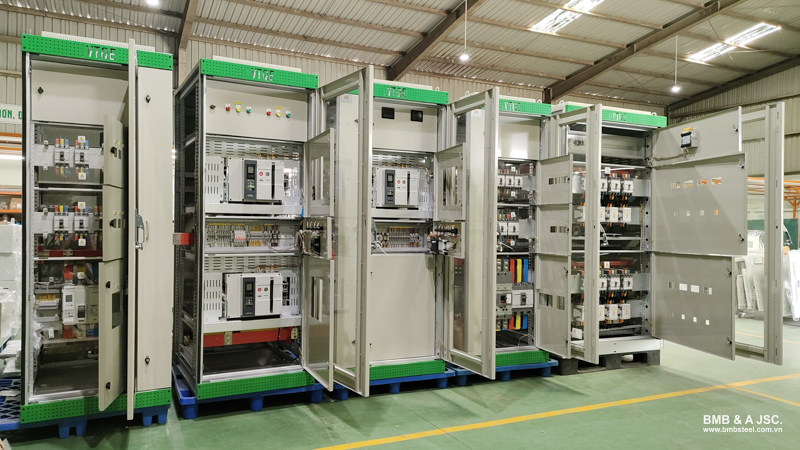
- Install electrical panels: The main switchboard (MSB) is installed at the main power input location, while distribution boards are placed in designated functional areas. Each panel contains control and protection devices such as circuit breakers, relays, switches, isolators, etc.
- Install electrical devices: Install sockets and switches according to the design, lighting systems tailored to each area, auxiliary equipment such as exhaust fans, air conditioners, pumps, motors, etc.
- Install cable trays and ladders: Set up cable trays and ladders to route and secure part or all of the wiring system.
- Safety checks: Conduct a comprehensive safety inspection before testing the system, including insulation resistance, load capacity, identification of risks such as leakage, short circuits.
Phase 3: System testing and handover
- Final technical inspection: Conduct a final system check based on current technical standards and procedures.
- Acceptance documentation: Prepare an official acceptance report outlining completed work, compliance status and contractor quality assurance.
- Handover to investor: Deliver the complete electrical system with technical documentation and maintenance records. The contractor is responsible for guiding the investor on the proper operation and usage of the system.
Important notes when installing the industrial electrical system
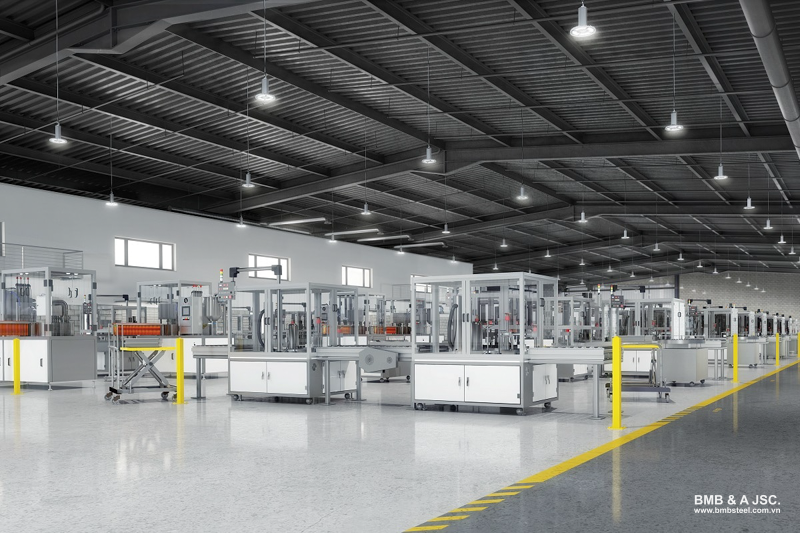
Before installation:
- Develop a detailed plan covering the timeline, workforce, materials required for each construction task.
- Clear the worksite to ensure a flat, safe, accessible area for installation.
- Inspect any existing electrical systems (if applicable) and repair damages before installing new components.
During installation:
- Strictly follow electrical safety regulations to ensure worker safety throughout the entire process.
- Install all equipment according to technical specifications, paying attention to cable joints to prevent leakage, short circuits.
- Use high-quality materials and equipment. Ensure cables are well-insulated and suitable for industrial environments.
- Implement lightning protection, fire alarm systems to enhance the overall safety.
- Maintain hygiene in the work area, clear away unused materials after installation.
After installation:
- Inspect the entire electrical system to ensure safe and stable operation.
- Prepare an acceptance report following regulations.
- Handover the system to the investor, providing clear instructions on proper maintenance.
Installing industrial electrical systems is not about setting up power lines, it's a comprehensive process that combines technical design, proper equipment selection, strict safety compliance, quality control. The well-planned industrial electrical installations ensure stable operations, minimize the risk of electrical failures, help optimize production efficiency and operational costs. To achieve these outcomes, businesses should partner with experienced and reputable contractors who stay up to date with the latest standards in industrial electrical engineering. If you're planning to develop a steel structure factory, BMB Steel is ready to accompany you with tailored, effective solutions from day one.










